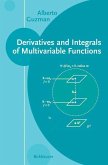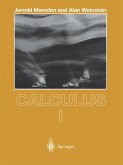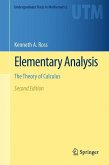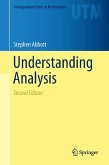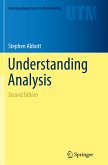This self-contained textbook gives a thorough exposition of multivariable calculus. It can be viewed as a sequel to the one-variable calculus text, A Course in Calculus and Real Analysis, published in the same series. The emphasis is on correlating general concepts and results of multivariable calculus with their counterparts in one-variable calculus. For example, when the general definition of the volume of a solid is given using triple integrals, the authors explain why the shell and washer methods of one-variable calculus for computing the volume of a solid of revolution must give the same answer. Further, the book includes genuine analogues of basic results in one-variable calculus, such as the mean value theorem and the fundamental theorem of calculus.
This book is distinguished from others on the subject: it examines topics not typically covered, such as monotonicity, bimonotonicity, and convexity, together with their relation to partial differentiation, cubature rules for approximate evaluation of double integrals, and conditional as well as unconditional convergence of double series and improper double integrals. Moreover, the emphasis is on a geometric approach to such basic notions as local extremum and saddle point.
Each chapter contains detailed proofs of relevant results, along with numerous examples and a wide collection of exercises of varying degrees of difficulty, making the book useful to undergraduate and graduate students alike. There is also an informative section of "Notes and Comments'' indicating some novel features of the treatment of topics in that chapter as well as references to relevant literature. The only prerequisite for this text is a course in one-variable calculus.
This book is distinguished from others on the subject: it examines topics not typically covered, such as monotonicity, bimonotonicity, and convexity, together with their relation to partial differentiation, cubature rules for approximate evaluation of double integrals, and conditional as well as unconditional convergence of double series and improper double integrals. Moreover, the emphasis is on a geometric approach to such basic notions as local extremum and saddle point.
Each chapter contains detailed proofs of relevant results, along with numerous examples and a wide collection of exercises of varying degrees of difficulty, making the book useful to undergraduate and graduate students alike. There is also an informative section of "Notes and Comments'' indicating some novel features of the treatment of topics in that chapter as well as references to relevant literature. The only prerequisite for this text is a course in one-variable calculus.
From the reviews:
"There is no doubt that one of the key mathematical courses, perhaps the most important and fundamental one for undergraduates in various branches of science and engineering, is calculus. ... This is essentially a textbook suitable for a one-semester course in multivariable calculus or analysis for undergraduates in mathematics. ... it contains some material that would be very useful for engineers. ... I recommend this book ... for undergraduate students in mathematics and professors teaching courses in multivariable calculus." (Mehdi Hassani, The Mathematical Association of America, June, 2010)
"This book was written as a textbook for a second course in calculus ... . The authors differentiate this book from many similar works in terms of the continuity of approach between one-variable calculus and multivariable calculus, as well as the addition of several unique topics. The book is self-contained ... . Summing Up: Recommended. Lower- and upper-division undergraduates." (D. Z. Spicer, Choice, Vol. 47 (11), July, 2010)
"This text is a fairly thorough treatment of real multivariable calculus which aims to develop wherever possible notions and results analogous to those in one-variable calculus. ... Each chapter concludes with a section of notes and comments, and an extensive set of exercises." (Gerald A. Heuer, Zentralblatt MATH, Vol. 1186, 2010)
"There is no doubt that one of the key mathematical courses, perhaps the most important and fundamental one for undergraduates in various branches of science and engineering, is calculus. ... This is essentially a textbook suitable for a one-semester course in multivariable calculus or analysis for undergraduates in mathematics. ... it contains some material that would be very useful for engineers. ... I recommend this book ... for undergraduate students in mathematics and professors teaching courses in multivariable calculus." (Mehdi Hassani, The Mathematical Association of America, June, 2010)
"This book was written as a textbook for a second course in calculus ... . The authors differentiate this book from many similar works in terms of the continuity of approach between one-variable calculus and multivariable calculus, as well as the addition of several unique topics. The book is self-contained ... . Summing Up: Recommended. Lower- and upper-division undergraduates." (D. Z. Spicer, Choice, Vol. 47 (11), July, 2010)
"This text is a fairly thorough treatment of real multivariable calculus which aims to develop wherever possible notions and results analogous to those in one-variable calculus. ... Each chapter concludes with a section of notes and comments, and an extensive set of exercises." (Gerald A. Heuer, Zentralblatt MATH, Vol. 1186, 2010)



